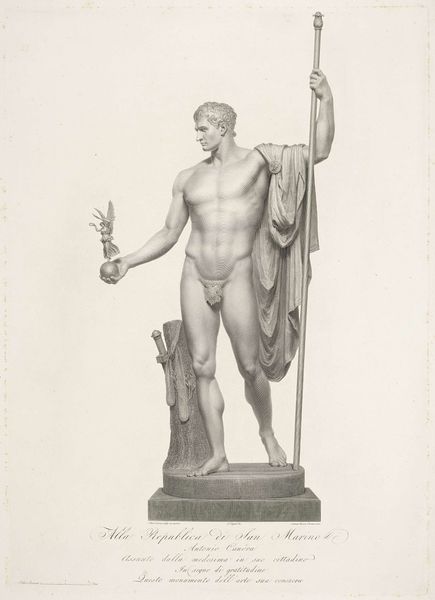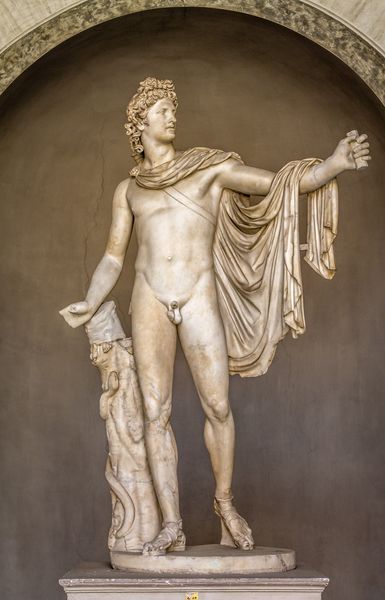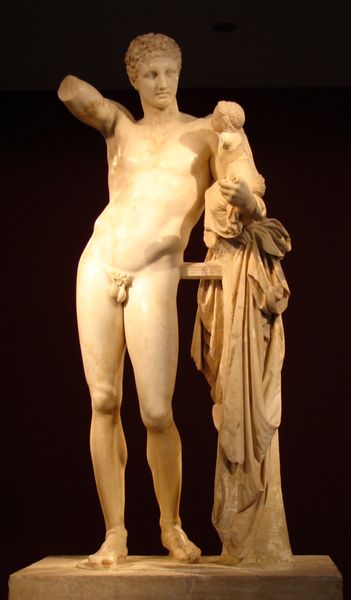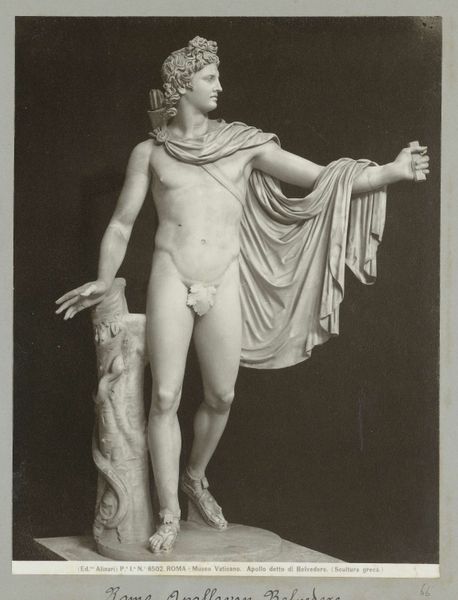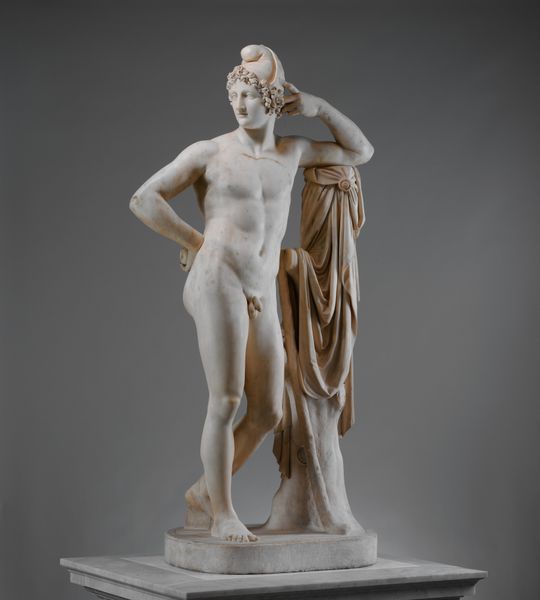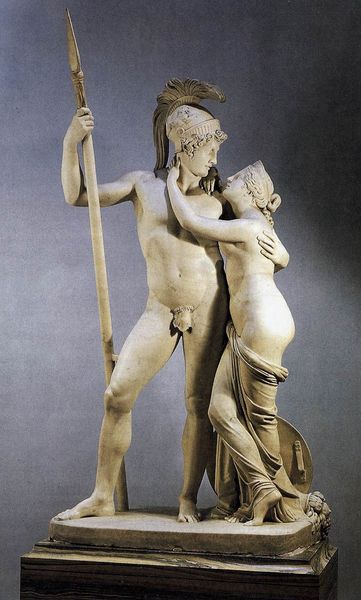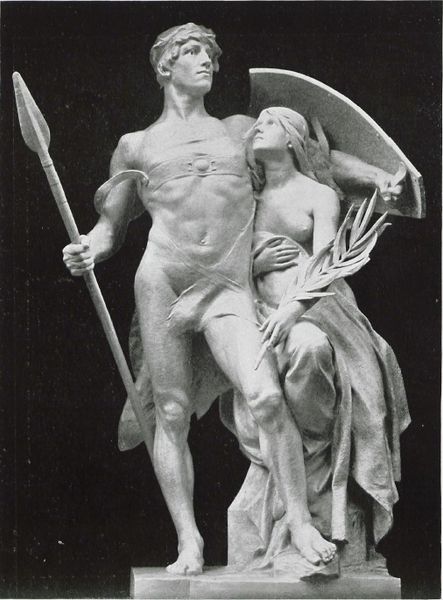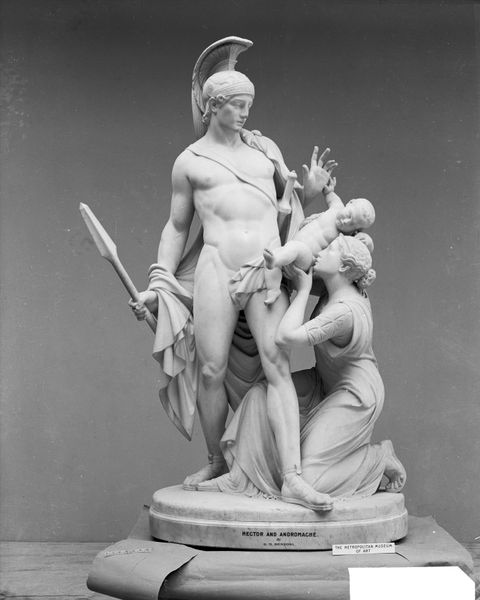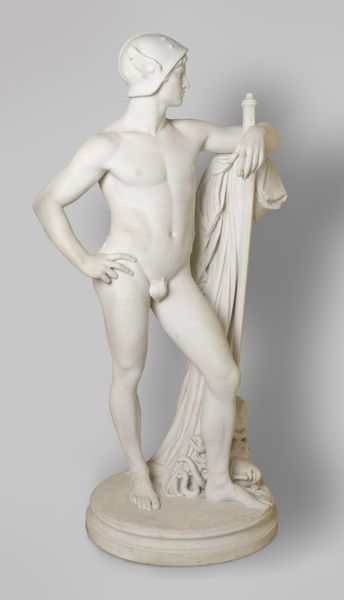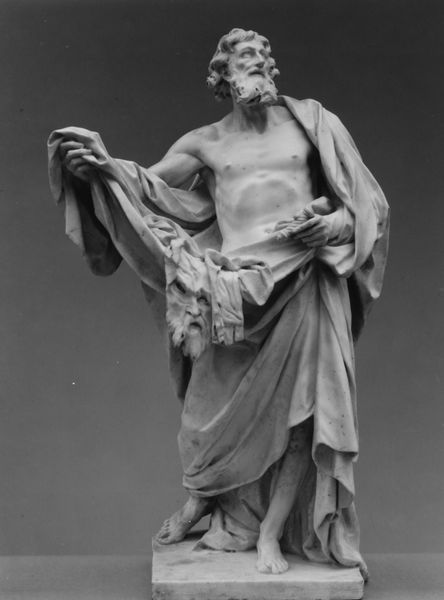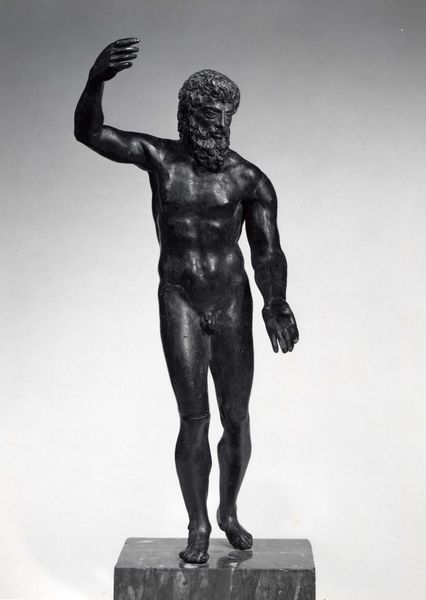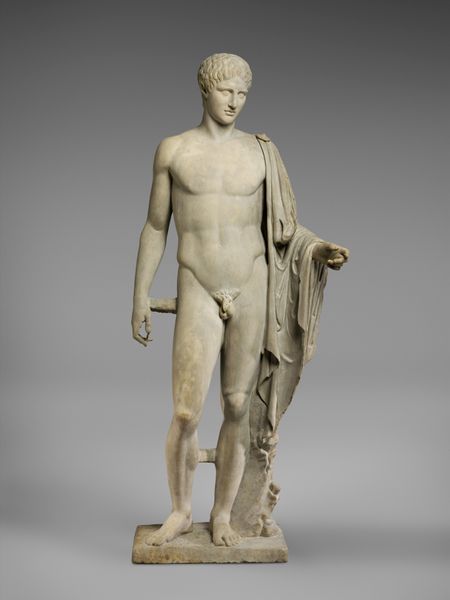
sculpture, marble
#
neoclacissism
#
statue
#
sculpture
#
classical-realism
#
figuration
#
sculpture
#
history-painting
#
academic-art
#
marble
#
statue
Copyright: Public domain
Curator: Here we have Antonio Canova’s marble sculpture, Perseus with the Head of Medusa, completed in 1806. The stark white is visually striking, a kind of ghostly triumphalism. Editor: Immediately, the perfection is chilling. It is an unsettling blend of power and classical idealism, which are embodied through the material choice, flawless marble. What does such icy perfection say about power, especially masculine power? Curator: Exactly. This piece embodies Neoclassical ideals, a deliberate return to the perceived purity and rationality of ancient Greece. Perseus is a symbol of reason triumphing over monstrous, female irrationality. It's a deeply gendered and political statement reflecting the social structures of Canova's time. Editor: The meticulous process—extracting, carving, polishing this intractable material—speaks to a specific kind of labor, the artisan elevating raw materials to high art. Canova, a master of his craft, but also bound by the demands of his patrons, often royalty or nobility. Who is this polished triumph ultimately for? Curator: Indeed. And beyond patronage, it fits into a wider European cultural context fascinated with mythology, which was not so dissimilar from contemporary global exploitation, class disparity, and gender inequality, as these stories often become tools of oppression. What myths do we elevate today and to what ends? How do their forms reflect the material conditions that allow their spread? Editor: Considering marble, one might ponder: from where was it sourced? Who labored to extract it? It’s about transforming base materials into symbols of power. This is no different than transforming human labour into refined luxury goods today, still masking material extraction with smooth perfection. The highly polished, gleaming perfection occludes so many details. Curator: This gets to the core questions that still resonate: How are historical narratives sculpted—literally, in this case—to uphold certain ideologies? How do seemingly neutral aesthetics reinforce systems of power, silencing the very Gorgons they claim to have conquered? The chilling, triumphant white is perhaps not just ghostly, but also blinding. Editor: Yes. It seems to say that in interrogating these forms, their source and trajectory from rock quarry to palace hall, we start to uncover what their gleam obscures, reflecting on the materiality behind myth and monument.
Comments
No comments
Be the first to comment and join the conversation on the ultimate creative platform.
